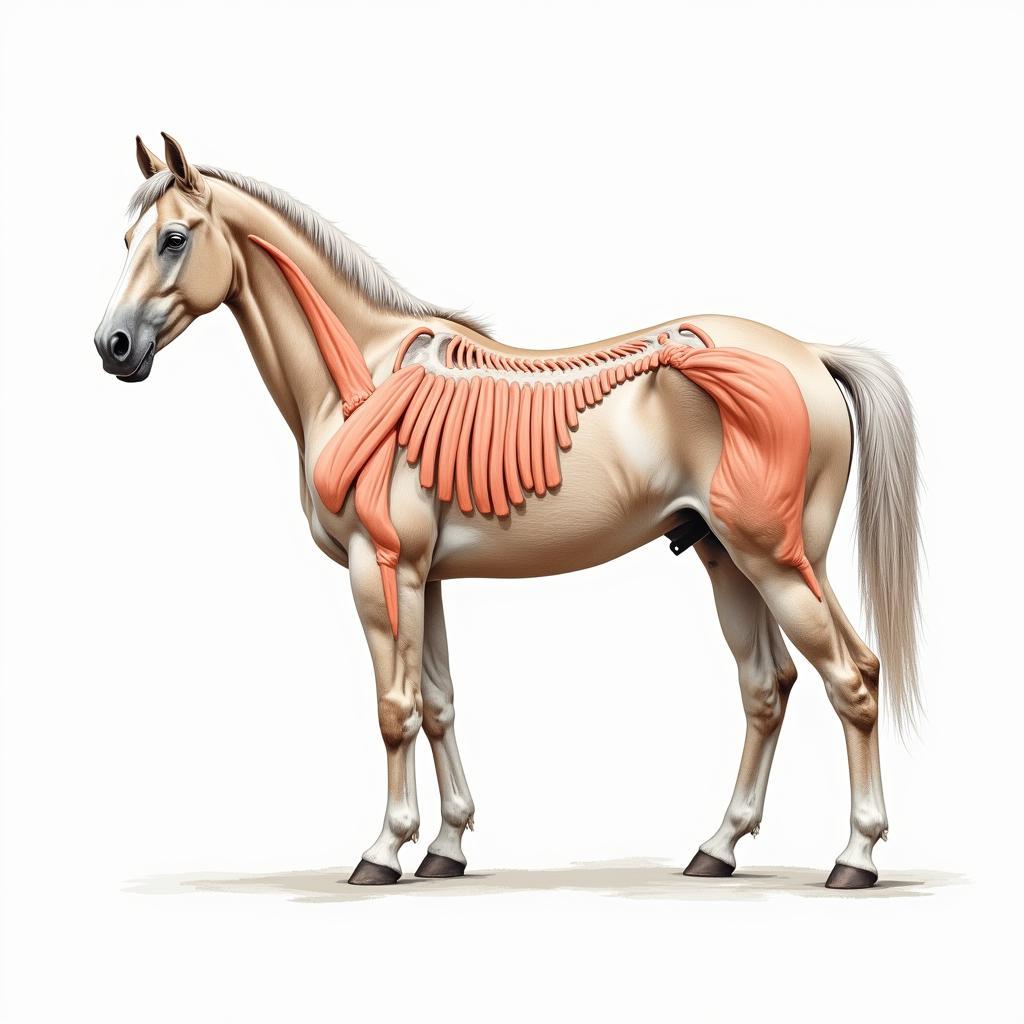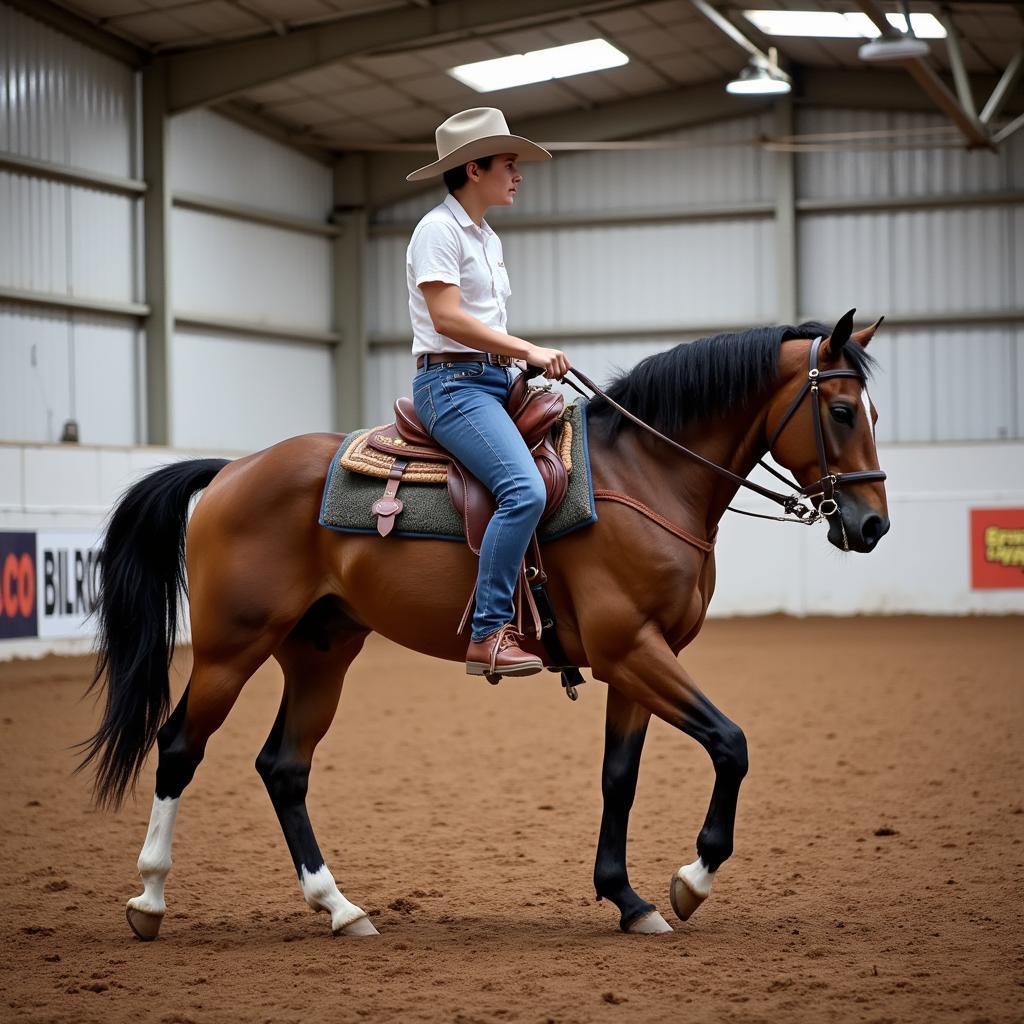Choosing the right reining saddle for any horse is a significant decision, but it becomes even more crucial when your horse has a shorter back. A poorly fitted saddle can lead to discomfort, behavioral issues, and even long-term back problems. Finding the right fit ensures your horse’s comfort and maximizes your performance in the reining arena.
 Horse Anatomy Illustration
Horse Anatomy Illustration
Understanding the Challenges of a Short Back
Horses with short backs often present unique fitting challenges. Their conformation makes it difficult to find saddles that distribute weight evenly without putting excess pressure on their loins, the sensitive area where the back meets the hindquarters. Pressure in this area can lead to pain, muscle soreness, and even lameness. Therefore, selecting a reining saddle specifically designed to accommodate a short back is paramount.
Key Features to Look for
When shopping for a reining saddle for your short-backed partner, keep these essential features in mind:
-
Shorter Tree: The tree is the foundation of the saddle. For a short-backed horse, you’ll need a saddle with a shorter tree that fits comfortably within the horse’s back length without extending onto the loin area.
-
Rounder Skirt: A rounder skirt, as opposed to a square skirt, can help distribute the rider’s weight more evenly over a smaller surface area.
-
Forward Flap Design: Saddles with a more forward flap can help accommodate the rider’s leg position without crowding the horse’s shorter barrel and hindering their movement.
-
Lightweight Construction: A lightweight saddle will put less strain on your horse’s back. Look for saddles made from quality materials that offer durability without excessive bulk.
-
Proper Padding and Paneling: Adequate padding and well-designed panels are crucial for distributing pressure evenly and preventing pressure points.
The Importance of Professional Saddle Fitting
While understanding these key features is essential, nothing can replace the expertise of a professional saddle fitter. These experts can assess your horse’s unique conformation, taking into account factors such as back length, wither height, and barrel shape. They can recommend suitable saddle options and make necessary adjustments for a perfect fit.
“A well-fitted saddle is an investment in your horse’s comfort and your riding performance,” says Master Saddle Fitter, Sarah Williams. “Never underestimate the importance of seeking professional help to ensure the best possible fit for your horse.”
Beyond the Saddle: Additional Considerations
-
Cinch Selection: Choose a cinch that is the appropriate length and width for your horse’s girth. A wider cinch can help distribute pressure more evenly.
-
Saddle Pads: While a well-fitted saddle should not rely on pads to compensate for fit issues, a good quality saddle pad can provide additional cushioning and shock absorption.
 Horse and Rider with Properly Fitted Reining Saddle
Horse and Rider with Properly Fitted Reining Saddle
- Regular Saddle Checks: Even with a properly fitted saddle, it’s crucial to check the fit regularly, especially if your horse is still growing or changing shape. Look for signs of uneven wear on the saddle pad or any rubs or sores on your horse’s back.
Conclusion
Finding the right reining saddle for your short-backed horse requires careful consideration and expert advice. By prioritizing a shorter tree, rounder skirt, forward flap design, and professional fitting, you can ensure your horse’s comfort and enhance their performance in the show ring. Remember, a happy and comfortable horse is a successful horse!
FAQs
1. What type of saddle pad is best for a short-backed horse?
A contoured saddle pad with good shock absorption qualities is often recommended for horses with short backs.
2. How often should I have my saddle checked by a professional?
It’s a good practice to have your saddle checked by a professional at least once a year, or more frequently if your horse is young, still growing, or has undergone significant changes in weight or muscle condition.
3. Can I use a regular reining saddle on my short-backed horse?
It’s not recommended to use a standard reining saddle on a short-backed horse as it can cause discomfort and potential back problems. Saddles designed for short backs are specifically designed to address their unique conformation.
4. What are the signs that my saddle doesn’t fit my horse properly?
Signs of a poorly fitted saddle can include:
- Reluctance to move forward
- Pinning ears back
- Bucking or rearing
- Uneven sweat marks under the saddle
- Rubs or sores on the back
5. How much should I expect to spend on a good quality reining saddle for a short-backed horse?
Prices can vary depending on the brand, materials, and customization. However, expect to invest in a high-quality saddle that will provide a comfortable and supportive fit for your horse.
For more information on horse care and selecting the perfect equipment, browse our other helpful articles on Justus Horses USA.
If you have any questions or need personalized advice, our team of experts is here to assist you. Contact us at Phone Number: 0772127271, Email: [email protected], or visit us at QGM2+WX2, Vị Trung, Vị Thuỷ, Hậu Giang, Việt Nam. We offer 24/7 customer support to ensure your peace of mind.